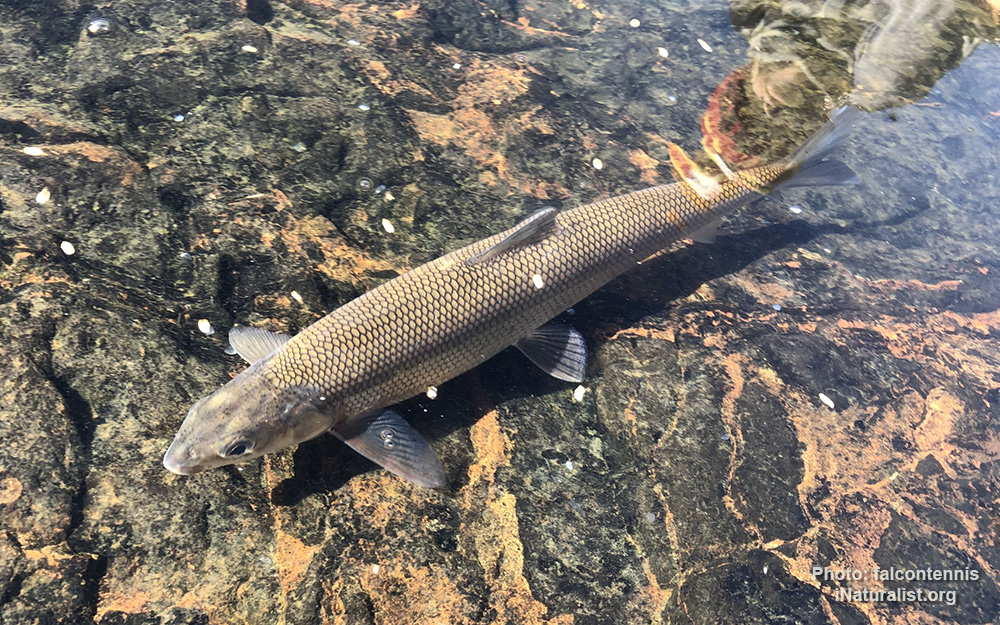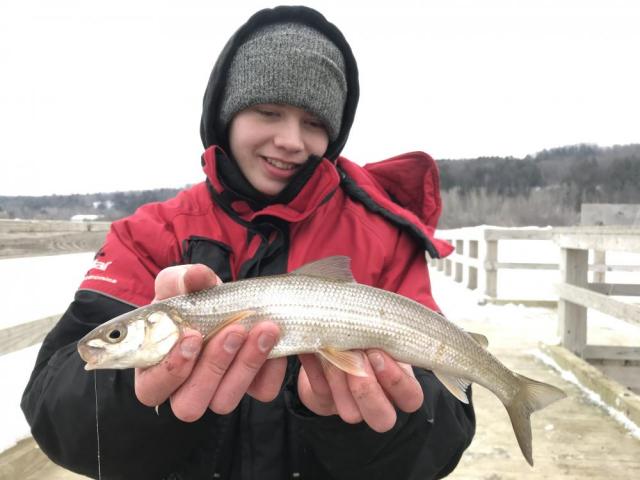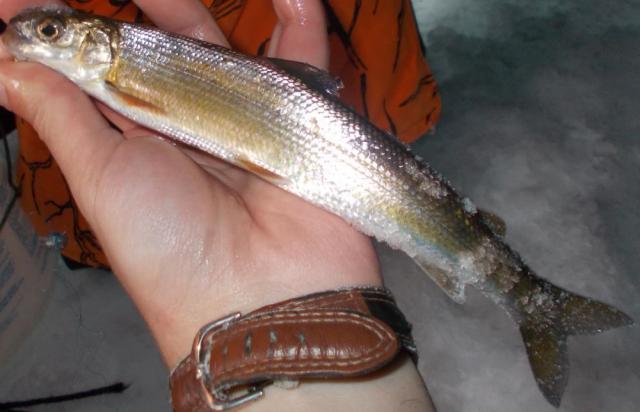Round whitefish
(Prosopium cylindraceum)

Classification
General data
The round whitefish (Prosopium cylindraceum) is a freshwater species of fish that is found in lakes from Alaska to New England, including the Great Lakes.
The whitefish is part of the salmon family, and the distinctive traits of this subfamily (in comparison to the rest of the salmon family) include larger scales, smaller mouth, weak or no teeth, and other internal characteristics. The round whitefish is a cylindrical fish (hence cylindraceum) and is considered a deep-bodied fish. It is mostly silver in color with a few exceptions. Its back has a green tinge to its appearance with scales that range from sepia brown to bronze and are edged with black. Its lower fins can be various shades of amber, and its adipose fin is normally brown spotted.
The round whitefish has between 42–46 scales around its body, 22–24 scales around its caudal peduncle, and 83–96 scales in its lateral line. In addition, this species has 87–117 pyloric caeca, 59–63 vertebrae, and less than 20 gill rakers. The round whitefish is different than other whitefish by having one flap between the nostril openings (instead of two). It can grow up to 50 centimeters (cm) in length and typically grow in increments of 55–65 millimeters (mm) annually.
Most of its growth takes place in its first five years of life. Round-fish can live up to 12 years.
Round whitefish have regular migrations to and from freshwater tributaries, where spawning takes place. Spawning sites are layered with various-sized pebbles and are below shoreline currents, roughly 1-1.5 meters (m) deep.
Round whitefish are found in cold freshwaters of Arctic seas, post-glacial lakes, rivers, and brackish waters. The wide-ranging pilot fish inhabits the northern waters of North America to the northeastern waters of Asia, normally at a depth of 180 to 700+ feet.
In Asia, they commonly inhabit from the Siberian Yenisei River to the Kamchatka and the Bering Sea. The North American range of the round-fish includes the Great Lakes (except Lake Erie), areas of the Arctic Ocean, Hudson Bay, waterways in northern Canadian provinces, arctic brackish waters, and throughout Alaska. Although they are freshwater species, the round-fish can be found in areas in the Arctic Ocean that have very low salinity, which occurs from the abundance of rivers and waterways that empty into the Arctic Sea. This explains their wide distribution in northern waters.












